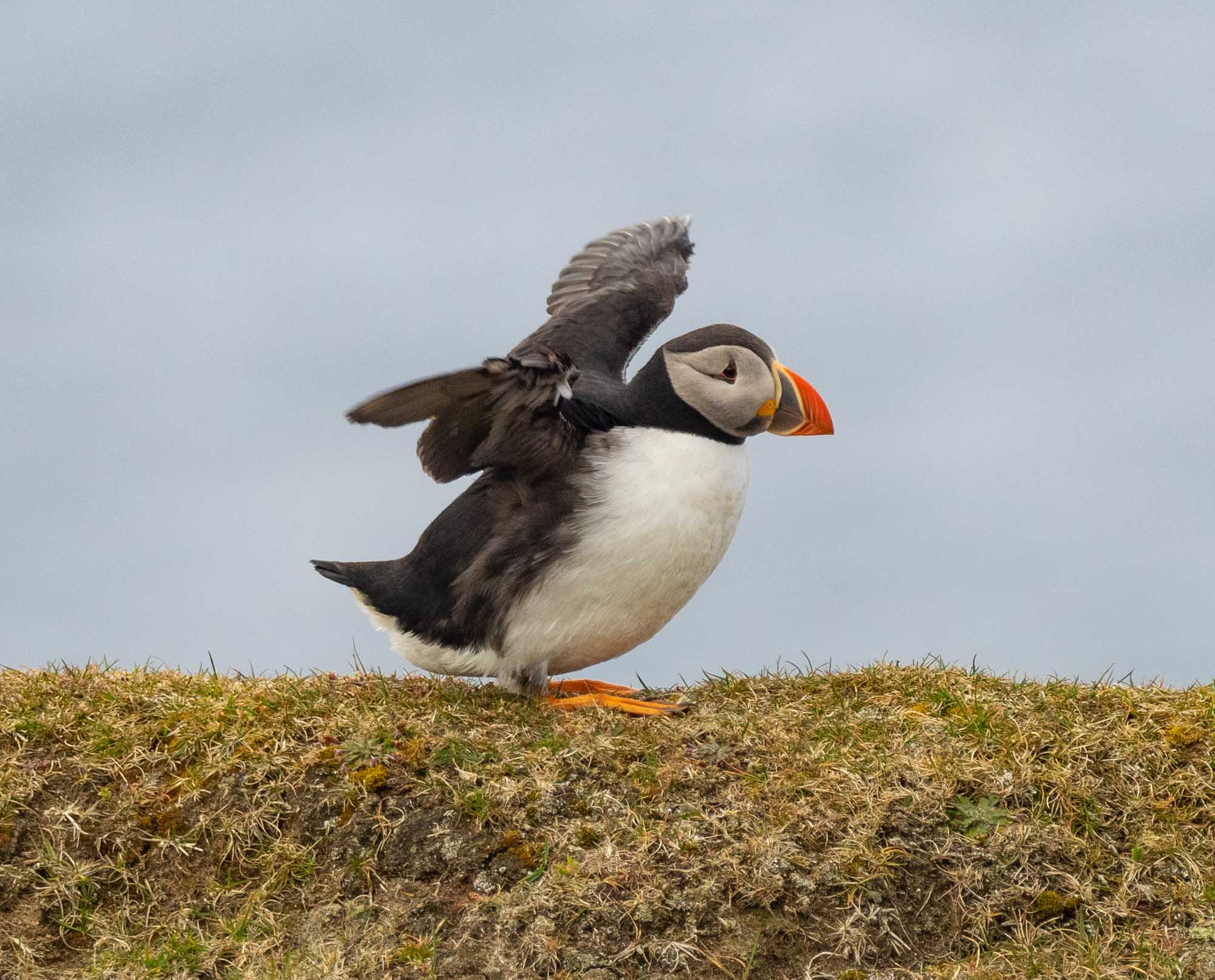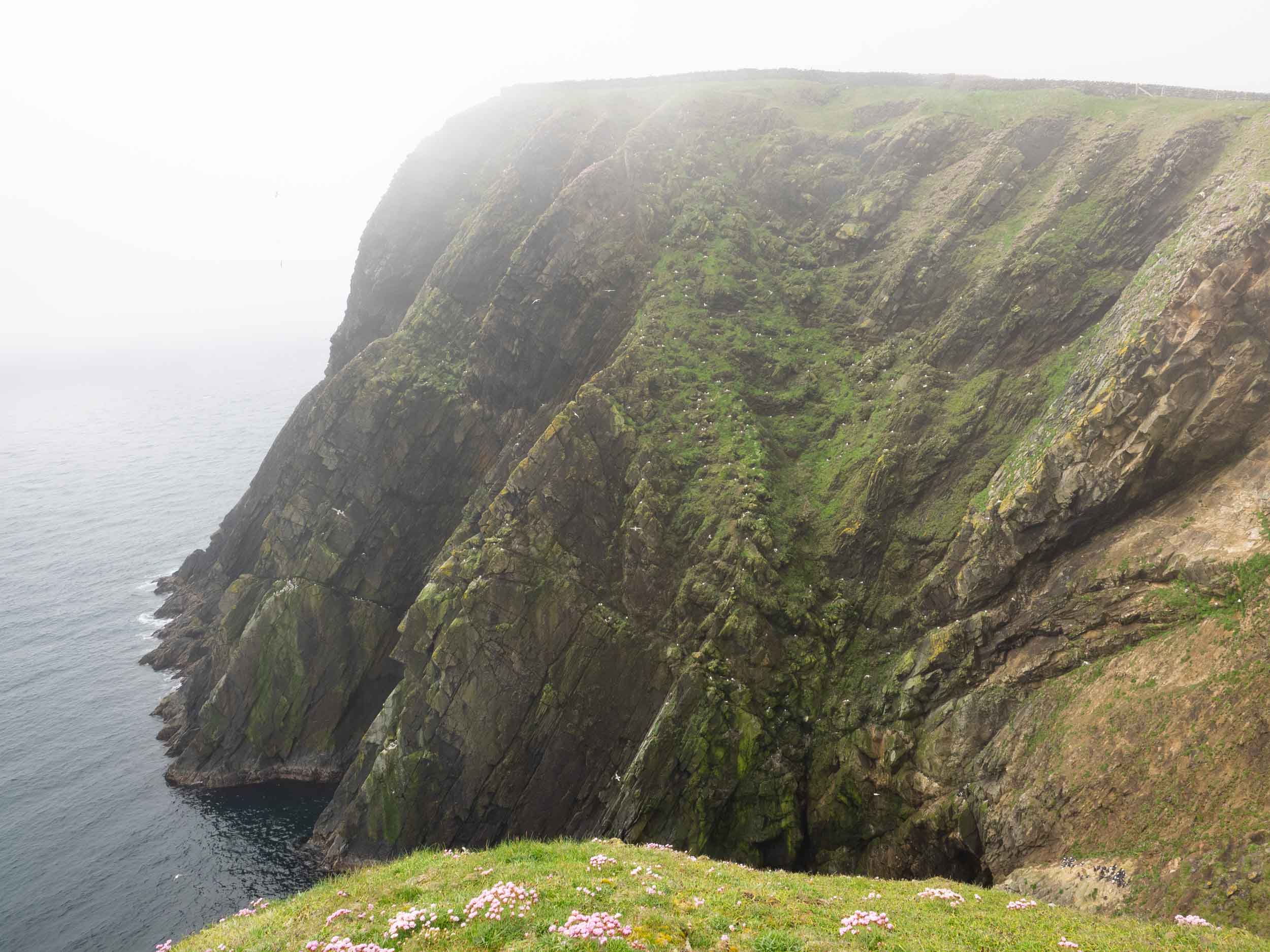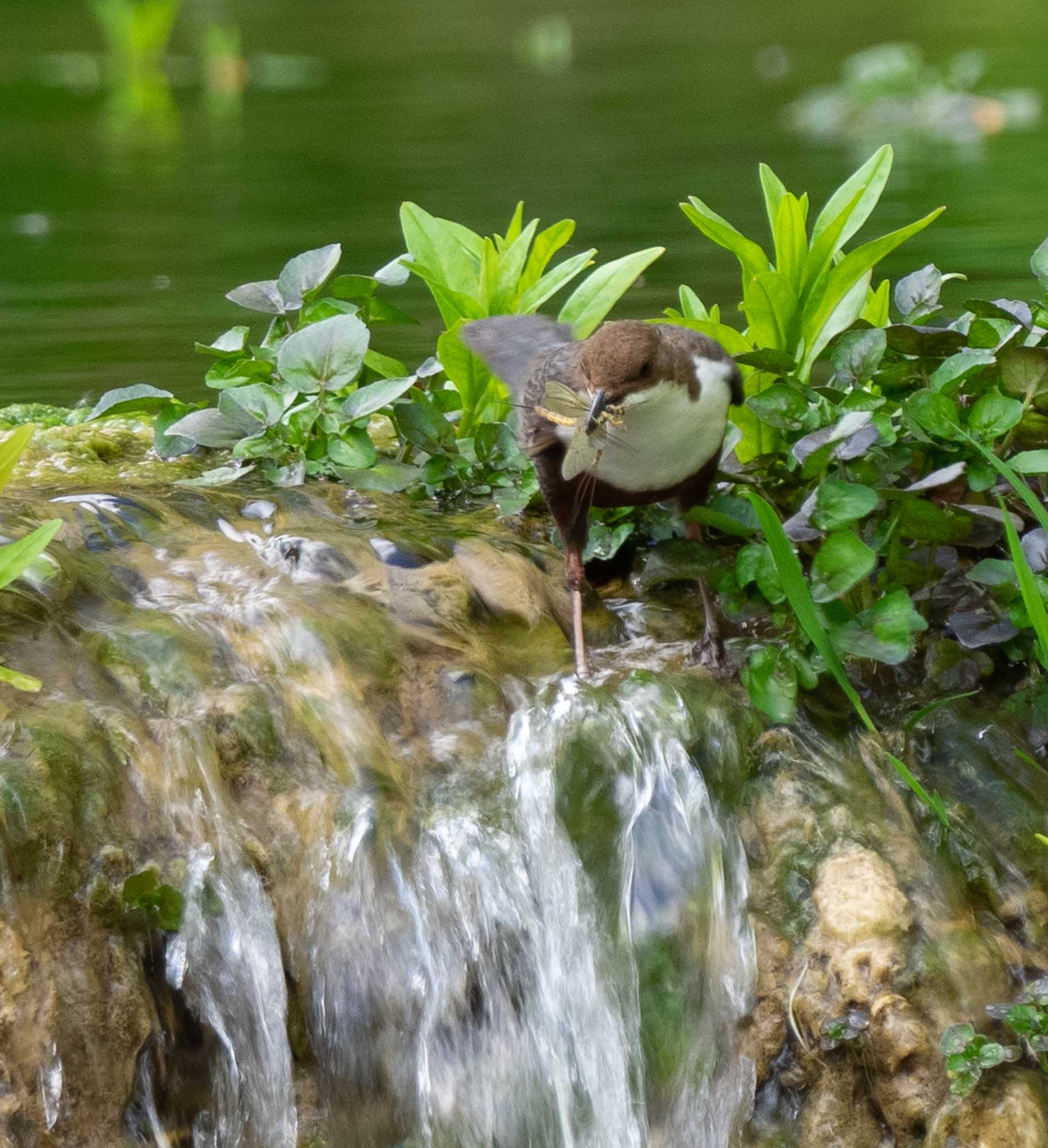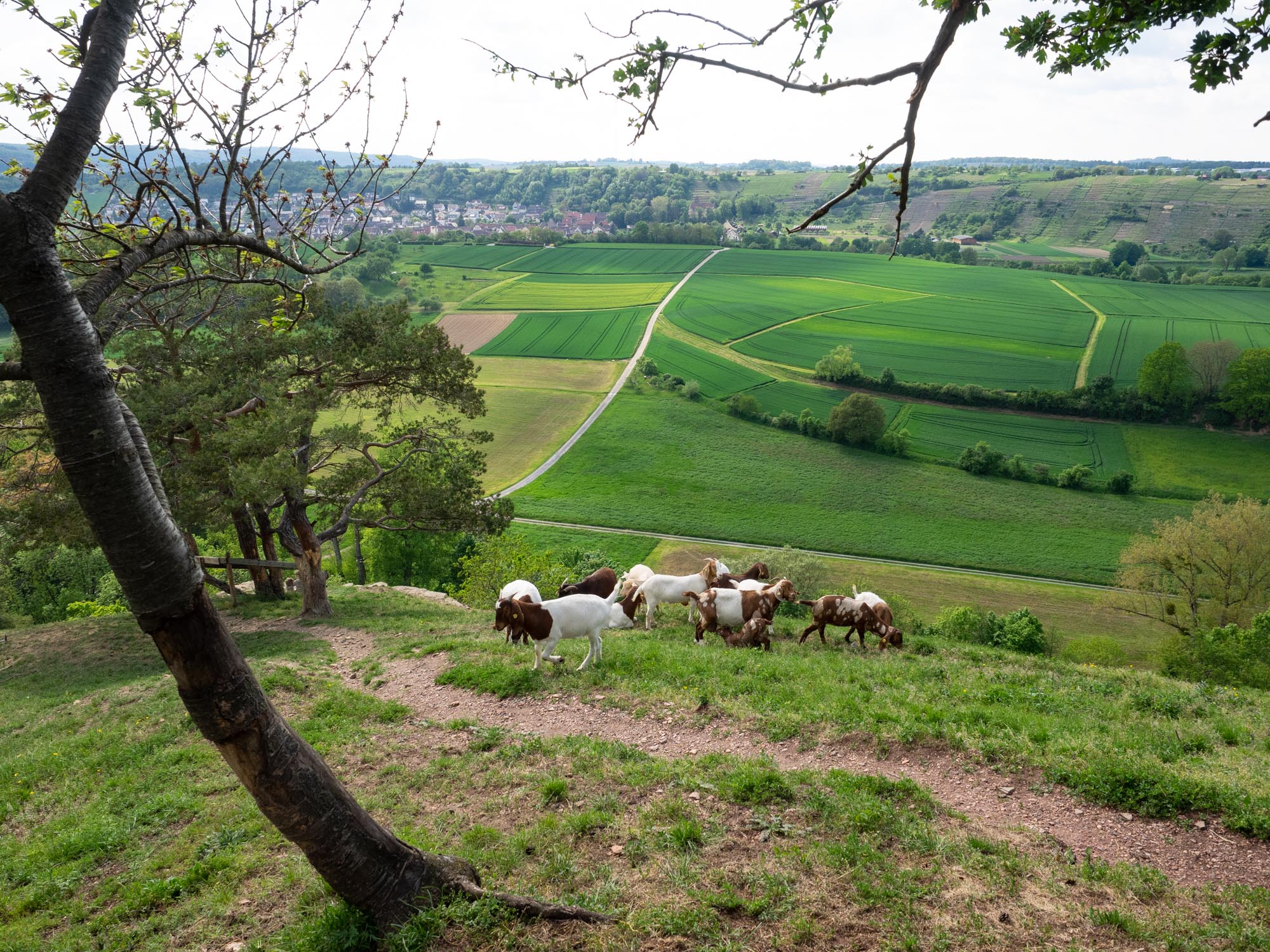Shetland Islands: north & south

An overnight ferry trip north from Aberdeen, and we awake to rainbows over Lerwick, Shetland.
Our original plan had been for a week at the Fair Isle Bird Observatory, but a devastating fire on 10th March forced a change of destination. We now have 10 days to explore Shetland Islands at our leisure, and a beautifully renovated croft as our home base.
(28th - 30th May, 2019)
Arriving in Lerwick on the overnight ferry from Aberdeen. 7am, chilly, rain showers, and a spectacular skyscape.
Lerwick, population 7000, is the only town in Shetland and the most northerly town in the British Isles. At 60.15N, it’s about the same latitude as Helsinki (Finland) and Anchorage (Alaska). The equivalent distance from the equator in the southern hemisphere is way, way south of Macquarie Island (54.37S)!
We’re here for the birds. Kind of. Our timing is perfect, as the seabirds have arrived to breed. This immature gull was one of many birds escorting the ferry in to berth.
We’re actually just looking forward to spending time somewhere so remote and so very different to home. The most obvious difference? No trees! This is the croft we’ve rented for our stay.
The croft … all ours for the next 10 days.
The view from the croft is spectacular. The locality is called ‘Nesting’ … apt for a couple of birders!
The weather and lighting are constantly changing. Sun, hail, rain, sun, wind … and a temperature range of about 3-9 degrees.
Sumburgh Head – the far south
Day 2 was our first real day of exploring, so we took our hire car and headed south. Sumburgh Head is the most southerly point in the Shetlands (apart from Fair Isle), and part of the same ‘Mainland’ island as Nesting and Lerwick.
The lighthouse and surrounds have historical significance, but – predictably – we focussed on the birds. And there were many! The sheer cliffs are currently crowded with seabirds, nest building and incubating eggs. No chicks yet, I think. But plenty of activity. Fulmars, guillemots, and even our first two puffins! Here’s a glimpse.
Fulmar (locally: Mallie) Fulmaris glaciaris
The most numerous birds on the vertical cliffs were the Fulmars. Despite their superficial resemblance to gulls, they’re actually a kind of petrel. They are true seabirds, only coming to land to breed. The strange beak is made up of several plates, with the nostrils prominently on top. Pairs bond for life and may live 40 years. Each pair chooses a narrow ledge of a steep cliff to raise their single chick. The cliffs of Sumburgh Head provide quite soft nest sites, many with grassy surrounds and even flowers!
Guillemots (locally: Loom or Murre) (Uria aalgae)
Birds in the family Alcidae are referred to as ‘Auks’. They fly underwater, but they’re not related to penguins. And, unlike penguins, auks can still fly. To some extent. And some better than others. Guillemots are not good flyers and nor can they walk well. It’s little surprise, then, to see them nesting in close groups on rocks or cliffs just above sea level. They make no nest, and instead lay a single, pear-shaped egg on bare rock. The chick leaves the nest after just a few weeks, and long before it can fly.
We could see no chicks, and it may be that some birds were just resting, not nesting. But birds were mating and we did spot a brilliant blue-green egg (photo #8, below).
Puffins (locally: Tammie Norrie) (Fratercula arctica)
The iconic and rather comic-looking bird, emblematic of this region. And, we confess, it was high on our wish-list of birds to see. So when we spotted our first one, it was more than a little bit exciting!
Puffins too are auks, but they fly and walk better than their cousin guillemots. They also use a very different nesting strategy. They lay a large egg deep in a burrow, and the period from egg-laying to fledging can take up to 3 months. The upper cliffs are quite riddled with burrows. Some are made by rabbits, and puffins will happily take over such ready-made homes. For an Australian, it’s difficult to view rabbits in such a positive light.
Razorbills (locally: Sea Crua or Wylkie) (Alca torda)
This third auk species is less common than both guillemots and puffins. We spotted just a few pairs, each nesting on a narrow ledge high on the cliff face.
European shags (locally: Skarf) (Phalacrocorax aristotelis)
This is the smaller of two cormorant species here, and the more interesting for us. The other species is the Great Cormorant, a subspecies of which we have in Australia. The European shag is only found along the northern and western coasts of Europe, and some regions around the Mediterranean and north Africa. It has a head crest and a greenish tinge to the breeding feathers, and so is sometimes called the Green Shag.
Shags build nests of seaweed, twigs and other flotsam, all glued together by their own guano. It’s common to see colourful fishing ropes as part of the nest.
Unst and Hermaness NR – the far north
The weather forecast for yesterday, our 3rd day in the Shetlands, was the best yet. The previous day was wet and cold, so we welcomed a sunny day. We decided to take the drive north to the sea cliffs of Hermaness. The nature reserve there is reported to hold the Shetland’s largest breeding colony of gannets, the world’s largest colony of Great Skua … and some 25,000 puffins!
Unst is the northernmost island of the Shetlands. To get there involves two ferry crossings and a couple of hours driving.
Typical view as we drove north across the isle of Yell. Fields, sheep, just a few buildings, sheep, grass … and waterways both east and west.
Waiting for ferry boarding at our second crossing point, from Yell to Unst.
Shetland wool, keeping us company as we wait. There were also highland cattle, domestic geese, and even Shetland ponies over the hill.
Sunny, but cold. Beanie, scarf, thermals, 2 woollen jumpers plus a wind jacket. And gloves. Should be OK.
Hermaness Nature Reserve is nearly 1000 acres of rolling heath … with sheep. Again, it’s difficult to think of sheep as part of a natural environment, but these sheep - or their cousins - have been grazing the islands for thousands of years. The current numbers of 280,000, however, are no doubt a bit higher than back then.
Early in the hour-long walk to the northwestern cliffs.
Every ewe had a lamb in tow, sometimes two.
Great Skua (locally: Bonxie) (Stercorarias skua)
There are some small birds hiding from the constant wind among the spiky heath, but the significant birds of this terrain are the ‘Bonxies’. This region is one of their breeding strongholds, and their nests are spaced out across the moors. We watched them chase off sheep but, despite the widespread warnings of ‘bonxie attack’, we passed by untroubled.
After what seemed a long and very cold walk, we reached the cliffs – only to discover what a truly cold wind feels like. With nothing in between, the arctic wind was fierce and biting. I could barely keep my feet, and holding a camera steady was nearly impossible.
But it was well worth every shiver and stumble!
Northern Gannets (locally: Solan) (Morus bassanus)
There are thousands upon thousands of Gannets at the breeding colony of Hermaness. Reportedly 30,000, a number easy to believe. They swirled like snow upon the wind, and painted the rocky outcrops white.
The northernmost tip of Unst – and of Scotland - the islands of Muckle Flugga
Puffins!
Among the wheeling gannets, fulmar, skuas and gulls, we’d also seen many puffins gliding in the updraft and then disappearing amid the vegetation of the upper cliffs. Although a little sorry not to have seen any up close, we felt the gannet sightings alone were enough to make this a memorable day. But then, just as we were about to leave the cliffs and head for the warmth of the car, a single Puffin appeared just metres away. And then another.
Paul immediately sat on the grass to watch them, while I crawled forward and lay flat on my belly, trying (and often failing) to steady my camera in the strong wind. We watched several birds as they moved in and out of their nest burrows, leaning into the wind, and occasionally taking flight. We delighted in seeing them up close, and tried to imagine what life must be like for these small and colourful auks. They were not apparently feeding, and they are unlikely to have chicks so early in the breeding season.
And there was one final surprise as we stood to leave. A pair emerged from a burrow opening just a metre from where Paul had been sitting! If he’d had an iPhone he would have managed a good shot! Alas, no iPhone, and we were both too slow to react with anything except dropped jaws. And goofy grins.
Norwick beach … a final stop in the north
On the eastern side of Unst, sheltered from the worst of the wind, we made a brief stop at a small sandy beach. The tide was low, and there was a chance we might see an otter.
No otters, but we were treated to sightings of several nice birds, including a wader we’d never seen before. All were sporting their summer colours.
All this, and we still have a week here in Shetland. More islands, clifftops, rocky beaches, and inland lochs to explore. And long hours of daylight too. It barely gets dark, and by 3am it is well and truly morning!
The pin shows the location of ‘Da Croft’ here in Nesting.


























































































